UPSC Daily Current Affairs: 3rd April 2025 | Current Affairs & Hindu Analysis: Daily, Weekly & Monthly PDF Download
GS3/Science and Technology
Chandrayaan-3 ChaSTE
Why in News?
Chandrayaan-3's Surface Thermophysical Experiment (ChaSTE) has made significant advancements in lunar exploration by being the first instrument to measure in situ temperatures near the Moon’s south pole, providing valuable insights into the lunar environment.
- ChaSTE successfully penetrated lunar soil and deployed a thermal probe, achieving results that previous missions could not.
- The experiment provided critical data on lunar surface temperatures, reinforcing evidence of water ice deposits.
Additional Details
- How ChaSTE Works:The thermal probe, integrated into the Vikram lander, landed on August 23, 2023. It features:
- 10 temperature sensors placed 1 cm apart along its length.
- A rotation-based deployment mechanism, which was pivotal for its success.
- A motor that rotates to push the probe downward, allowing it to penetrate the Moon's surface.
- The probe successfully reached a depth of 10 cm in the lunar regolith, continuously monitoring temperature variations until September 2, 2023. The final readings confirmed essential thermal properties for future lunar exploration.
- Comparisons with Previous Missions:
- ESA’s Philae lander (2014) on Comet 67P failed to deploy its MUPUS instrument due to an awkward landing.
- NASA’s InSight lander (2018) on Mars included a self-hammering device known as "The Mole" but faced issues with low friction, preventing it from collecting meaningful data.
The achievements of the ChaSTE experiment mark a significant milestone in lunar exploration, enhancing our understanding of the Moon’s surface and its potential resources.
GS1/History & Culture
Aqueduct
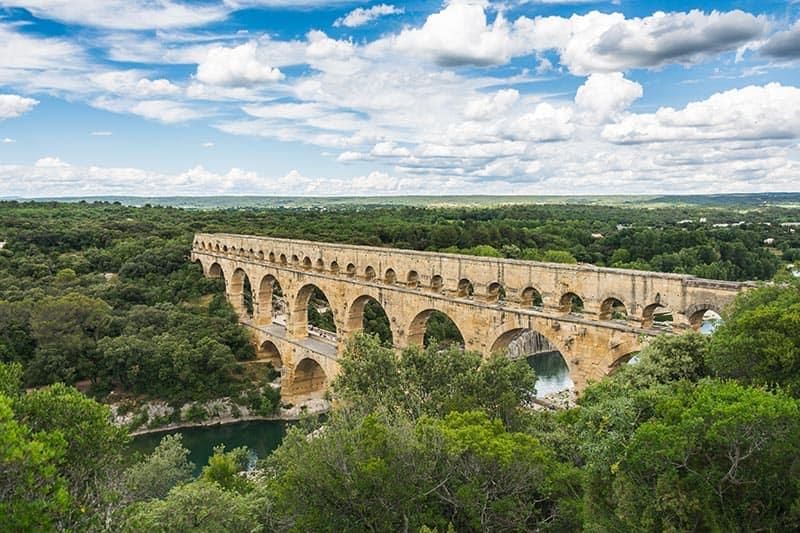 Why in News?
Why in News?
Recently, archaeologists uncovered a Roman aqueduct beneath the Rusovce Manor in Bratislava, Slovakia, providing valuable insights into ancient engineering techniques.
- An aqueduct is a constructed watercourse designed to transport water from a source to a distant distribution point.
- The term comes from Latin, meaning "to lead water," and encompasses various systems like pipes, canals, and tunnels.
- Romans are renowned for their aqueduct construction, particularly between 312 BCE and 230 CE, creating an extensive system to supply Rome with water.
Additional Details
- Aqueducts in History: The earliest aqueducts were utilized for irrigation purposes in ancient civilizations such as India, Persia, Assyria, and Egypt, dating back to as early as 700 BCE.
- Aqueducts have played a crucial role in enhancing the development of regions with limited access to fresh water sources.
This discovery highlights the advanced engineering skills of the Romans and their significant contributions to water management systems that have influenced modern engineering practices.
GS2/International Relations
The Reciprocal Tariff Dilemma
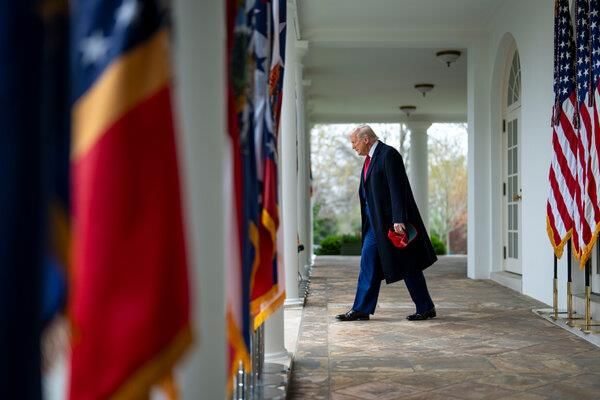 Why in News?
Why in News?
The Trump administration's 'Fair and Reciprocal Plan' aims to address perceived unfair trade practices by imposing tariffs intended to equalize trade relations between the U.S. and its foreign partners. This policy seeks to counter trade imbalances caused by various barriers that restrict U.S. market access. However, a deeper analysis of global trade patterns suggests that this strategy may be counterproductive, potentially harming U.S. interests instead of enhancing them.
- The U.S. share of world exports has only marginally increased over the past decade, indicating limited influence in global trade.
- Many nations already face lower tariffs on U.S. exports than the tariffs imposed by the U.S. on their goods, complicating the effectiveness of reciprocal tariffs.
- The potential for retaliatory measures could harm American exporters and reduce U.S. competitiveness.
Additional Details
- Global Trade Dynamics: The U.S. accounted for 12% of global merchandise exports in 2010, increasing to only 13.4% by 2022. This indicates that approximately 87% of world exports occur independent of U.S. participation.
- Disparity in Tariff Structures: Data shows that in 27 major trading partners, U.S. exports face lower tariffs than those imposed on U.S. goods, which could lead to American products becoming less competitive if reciprocal tariffs are enacted.
- Trade Disruptions: Tariff adjustments required to reach parity vary significantly among countries, and higher tariffs could lead to self-inflicted economic harm for the U.S.
- Risks of Trade Diversion: With 87% of global exports not involving the U.S., affected countries may redirect their exports to other markets, demonstrating a capacity to adapt to changing trade policies.
- Alternative Strategies: Instead of enforcing reciprocal tariffs, countries should focus on eliminating trade barriers and fostering open markets to enhance long-term competitiveness.
In conclusion, while the Fair and Reciprocal Plan aims to correct trade imbalances, it poses significant risks of economic self-harm. U.S. leverage in imposing reciprocal tariffs appears limited, and retaliatory actions may ultimately harm American businesses. A more effective approach would involve removing trade barriers and enhancing digital trade rather than relying on a rigid tariff-based strategy.
GS2/International Relations
Katchatheevu Islands
Why in News?
The Tamil Nadu Legislative Assembly has once again unanimously adopted a resolution urging the Union Government to retrieve Katchatheevu from Sri Lanka.
- Katchatheevu is a strategically significant uninhabited island located in the Palk Strait.
- The island is crucial for the fishing economy of Tamil Nadu and has historical and religious significance.
Additional Details
- Location: Katchatheevu spans 285 acres and is situated 33 km northeast of Rameswaram (India) and 62 km southwest of Jaffna (Sri Lanka).
- Strategic Importance: It serves as a maritime boundary marker between India and Sri Lanka, and is located in a fisheries-rich zone vital for Tamil Nadu’s economy.
- Religious Significance: Anthony’s Church on the island holds importance for fishermen from both nations.
- Historical Ownership: Initially ruled by the Jaffna kingdom in the 14th century, it later came under the Ramnad Zamindari. The 1974 agreement settled sovereignty in favor of Sri Lanka.
- International Maritime Boundary Line (IMBL): Established through the 1974 Indo-Sri Lankan maritime boundary agreement, based on the United Nations Convention on the Law of the Sea (UNCLOS), it has defined the maritime boundaries between the two countries.
- The IMBL impacts the Exclusive Economic Zones (EEZs), territorial waters, and other maritime zones, with Katchatheevu falling under Sri Lankan sovereignty due to the equidistant principle.
- Other Maritime Disputes: India has ongoing maritime disputes with Pakistan over the Sir Creek area and with Bangladesh regarding New Moore Island, which was settled in favor of Bangladesh by a 2014 ruling.
This resolution emphasizes the ongoing significance of Katchatheevu in India-Sri Lanka relations and highlights the complexities involved in maritime territorial claims.
GS2/Governance
Digital Child Abuse: The Danger of AI-Based Exploitation
 Why in News?
Why in News?
The alarming rise of AI-generated child sexual abuse material (CSAM) poses a significant risk to children globally. In response, the United Kingdom (U.K.) has initiated pioneering legislation aimed at combatting this issue, which has led to increased scrutiny and calls for legal reforms in India to address similar threats.
- The U.K. is introducing laws to criminalize AI-generated CSAM and related materials.
- India faces rising cybercrimes against children, highlighting an urgent need for legal reform.
- Proactive measures are essential to close existing legal loopholes regarding AI-generated content.
Additional Details
- U.K. Legislative Approach: The U.K. plans to criminalize the possession, creation, and dissemination of AI-generated CSAM. This includes making it illegal to possess manuals that instruct on using AI for CSAM production.
- The new legislation marks a shift to a "tool-centric" approach, focusing on the technology enabling exploitation, rather than solely on the actions of individuals.
- Rising Threat in India: According to the National Crime Records Bureau (NCRB) Report 2022, incidents of child pornography have surged, with nearly 1.94 lakh cases reported by April 2024.
- Existing laws in India, including the Information Technology (IT) Act and the Protection of Children from Sexual Offences (POCSO) Act, do not adequately address risks associated with AI-generated content.
- Recommendations for Reform: Suggested reforms include updating legal definitions, regulating digital intermediaries, and introducing specific provisions to address AI-generated CSAM.
In conclusion, the U.K.'s legislative measures serve as a critical model for India. By amending its laws to incorporate AI-specific safeguards and enhancing international cooperation, India can take vital steps to protect children in the digital landscape.
GS2/Polity
Proposed Waqf (Amendment) Bill 2025: Key Changes and Growing Controversy
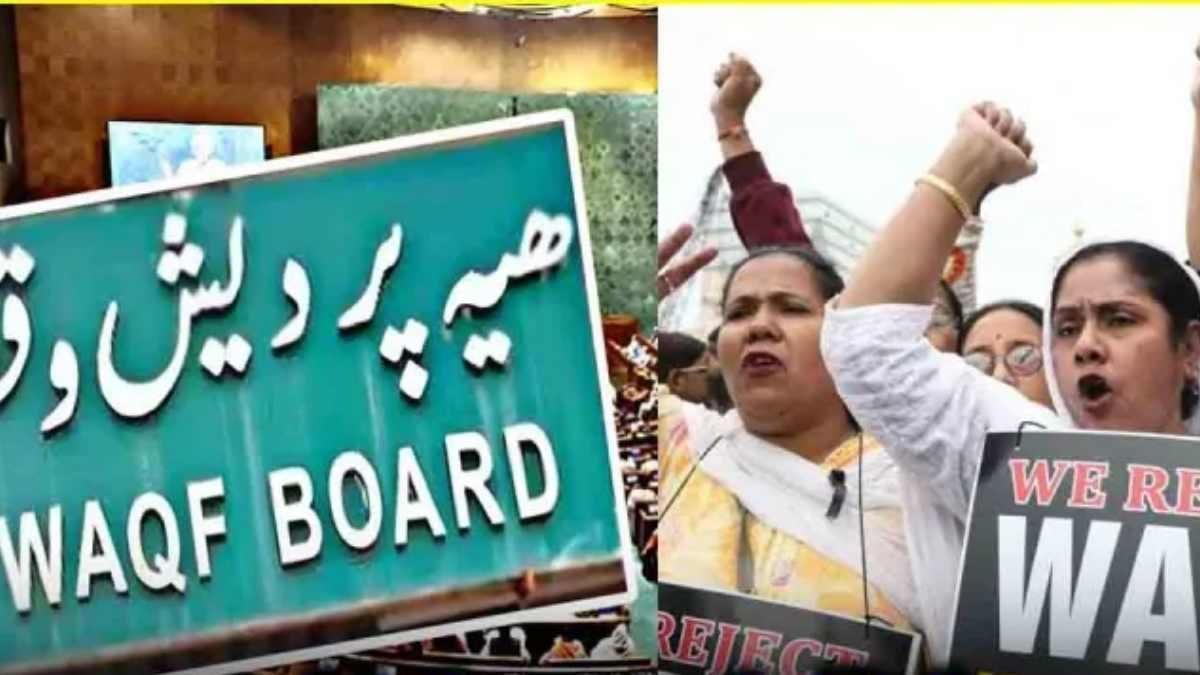 Why in the News?
Why in the News?
The Lok Sabha has recently passed the Waqf (Amendment) Bill, 2025, after an extensive debate lasting 12 hours. This legislation aims to amend the Waqf Act of 1995, and it has sparked significant discussion regarding the management of Waqf properties in India.
- The Bill introduces judicial oversight on Waqf Tribunal orders.
- It modifies the treatment of "waqf by user" properties.
- Senior government officials are now empowered to resolve property disputes.
- A digital registration system for Waqf properties is mandated.
- The application of the Limitation Act to Waqf properties is now included.
- The composition of Waqf Boards and Tribunals has been altered.
Additional Details
- Judicial Oversight: The amended Bill allows appeals to the High Court against the decisions made by the Waqf Tribunal, addressing previous limitations where Tribunal decisions were final.
- Waqf by User: The Bill retains the status of properties like mosques and graveyards that were registered before the new law, but future recognition requires documentation from practicing Muslims.
- Empowerment of Officials: Senior government officers are now authorized to determine whether a property is Waqf or government-owned, replacing the previous authority held exclusively by the Waqf Tribunal.
- Digital Registration: A centralized digital portal for registering Waqf properties is required, with a six-month deadline after the law's enactment for compliance.
- Limitation Act Application: The repeal of Section 107 means that Waqf properties are now subject to the standard 12-year limitation period for reclaiming encroached land.
- Board and Tribunal Composition: The Bill allows for non-Muslim members to be included in Waqf Boards, and Waqf Tribunals will now consist of three members, enhancing inclusivity.
The Waqf (Amendment) Bill 2025 presents significant changes to the governance of Waqf properties in India. While the government promotes these changes as measures for increased transparency and accountability, critics argue that they infringe upon the religious freedoms and rights of the Muslim community.
GS2/International Relations
50th Anniversary of Biological Weapons Convention (BWC)
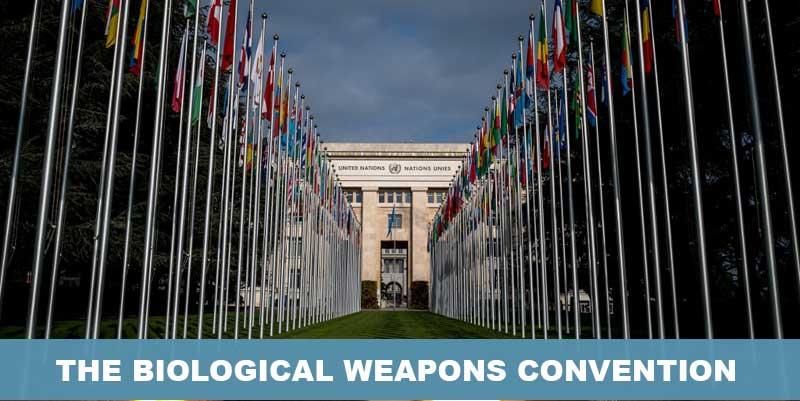 Why in News?
Why in News?
March 26, 2025, marks the 50th anniversary of the entry into force of the first multilateral disarmament treaty aimed at banning an entire category of weapons of mass destruction.
- The Biological Weapons Convention (BWC) prohibits the development, production, acquisition, transfer, stockpiling, and use of biological and toxin weapons.
- India is a party to the BWC and has established national measures to comply with its provisions.
Additional Details
- About the BWC: Also known as the Biological and Toxin Weapons Convention (BTWC), it is a disarmament treaty focused on banning biological and toxin weapons.
- Negotiation and Adoption: The treaty was negotiated in Geneva from 1969 to 1971, opened for signature on April 10, 1972, and entered into force on March 26, 1975.
- Key Provisions:
- Article I: Prohibits development, production, stockpiling, and use of biological weapons.
- Article II: Requires destruction or conversion of biological agents to peaceful purposes before joining.
- Article III: Prohibits transfer or assistance in acquiring biological weapons.
- Article VI: Allows states to file complaints regarding treaty violations with the UN Security Council.
- Article X: Promotes the exchange of materials and information for peaceful purposes.
- Structure and Membership: The depositary governments are the United States, United Kingdom, and Russian Federation. As of February 2025, 188 states are parties to the treaty.
- Review Conferences: Held every 5 years to assess treaty implementation and enhance confidence-building measures.
In conclusion, the Biological Weapons Convention plays a crucial role in the global disarmament framework, and its anniversary highlights the ongoing efforts to prevent the proliferation of biological weapons.
GS3/Defence & Security
INS Tarkash Intercepts Narcotics
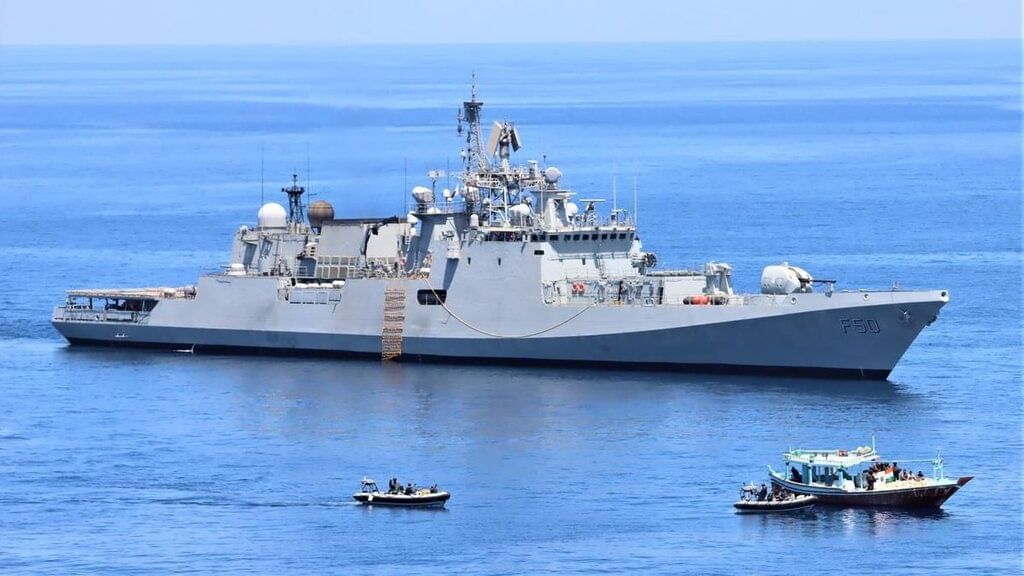 Why in News?
Why in News?
The Indian Navy's frigate INS Tarkash has recently conducted successful maritime security operations in the Western Indian Ocean, resulting in the seizure of over 2500 kg of narcotics.
- INS Tarkash is a modern stealth frigate of the Indian Navy.
- It is part of the Western Fleet and belongs to the Talwar class of guided missile frigates.
Additional Details
- Background: INS Tarkash is a modified version of the Krivak III-class frigates built by Russia. It was constructed at the Yantar shipyard in Kaliningrad and was commissioned into the Indian Navy on November 9, 2012.
- Specifications:
- Length: 124.8 m
- Beam: 15.2 m
- Draught: 4.2 m (13 ft 9 in)
- Top Speed: 32 knots (59 km/h; 37 mph)
- Capabilities: Equipped with advanced weapon sensors, it can address threats across multiple dimensions and can operate with one Ka-28 Helix-A antisubmarine helicopter or one Ka-31 Helix-B airborne early warning helicopter.
- Armament:The frigate is armed with various sophisticated weaponry including:
- Supersonic BrahMos missile system
- Advanced surface-to-air missile system
- Upgraded 100mm medium-range gun
- Optically controlled 30mm close-in weapon system
- Torpedoes
- Rocket launchers
- Advanced electronic warfare and communication suite
This operation highlights the proactive measures taken by the Indian Navy to enhance maritime security and combat drug trafficking in the region.
GS1/History & Culture
15th Century Copper Plates from the Vijayanagara Empire Discovered
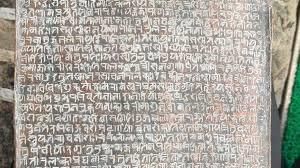 Why in News?
Why in News?
A set of copper plates from the early 15th Century, dating back to the reign of Devaraya I of the Sangama Dynasty, were recently unveiled by the Archaeological Survey of India (ASI).
- The copper plates are significant artifacts that provide insights into the governance and societal structure of the Vijayanagara Empire.
- The discovery highlights the cultural and administrative advancements during the reign of Devaraya I.
About the Sangama Dynasty
- Foundation: The Sangama Dynasty was the first ruling dynasty of the Vijayanagara Empire, established in 1336 CE by brothers Harihara I and Bukka Raya I.
- Origins: They were the sons of Bhavana Sangama, a chieftain from a pastoralist community of Yadava descent.
- Capital: The city was founded along the southern bank of the Tungabhadra River.
Notable Rulers
- Harihara I: Known for founding the empire and laying its initial foundations.
- Harihara II: Expanded the empire significantly, ruling from 1343 to 1379 CE.
- Deva Raya I: Ruled from 1404 to 1422 CE, further expanding the empire.
- Deva Raya II (Krishnadeva Raya): Regarded as one of the greatest rulers of the dynasty, he ruled from 1422 to 1446 CE and promoted art, literature, and diplomacy.
Downfall
The decline of the Sangama Dynasty was due to:
- Internal conflicts, particularly succession disputes.
- External pressures from the Bahmani Sultanate and neighboring kingdoms.
- The final blow occurred when Narasimha of the Saluva Dynasty usurped the throne in 1485 CE.
Key Features of the Copper Plates
- These plates are unique, dated to the coronation of King Devaraya I.
- The king granted the village of Gudipalli and the hamlets Rajendramada and Udayapalli during his coronation.
- The village was renamed Devarayapura-agrahara and divided into 61 shares allocated to various Brahmins skilled in Vedas and Shastras.
- The inscriptions are written in Sanskrit, Kannada, and Nagari characters.
- The seal features an image of Vamana, deviating from the usual Varaha (boar), the royal insignia of the Vijayanagara Empire.
Historical Significance
Dated to Saka 1328 (November 5, 1406 CE), the plates provide insights into the lineage from Chandra and Yadu to the five sons of King Harihara: Kampa, Mãrapa, and Muddapa.
[UPSC 2023] Who among the following rulers of the Vijayanagara Empire constructed a large dam across the Tungabhadra River and a canal-cum-aqueduct several kilometres long from the river to the capital city?
- (a) Devaraya I
- (b) Mallikarjuna
- (c) Vira Vijaya
- (d) Virupaksha
GS3/Environment
What is the Green Credit Programme?
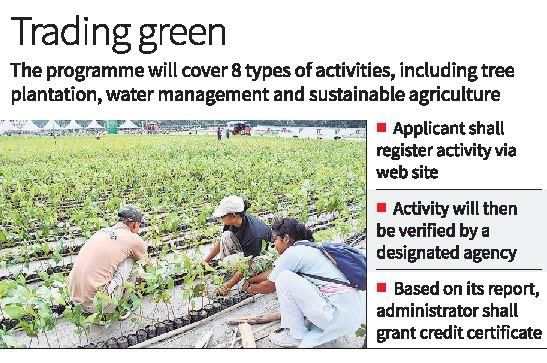 Why in News?
Why in News?
The Green Credit Programme (GCP), initiated by the Ministry of Environment, Forest and Climate Change (MoEFCC) in 2023, has garnered attention due to legal concerns raised by the Ministry of Law and Justice regarding its business model.
- The GCP was officially launched in December 2023 by Prime Minister Narendra Modi during the UN climate conference in Dubai.
- This program encourages voluntary participation in environmental activities, allowing various participants to earn green credits.
- Participants can include individuals, companies, and industries, engaging in actions such as tree plantation, water conservation, and waste management.
- The credits earned can be traded on a domestic platform, aiding participants in meeting sustainability targets and fulfilling legal obligations.
- The initiative is managed by the Indian Council of Forestry Research and Education (ICFRE), an autonomous body under the MoEFCC.
Additional Details
- Support for Mission LiFE: The GCP aligns with the Mission LiFE (Lifestyle for Sustainable Environment) and advocates for a market-based approach to environmental action.
- Criticisms of the Program:
- Forest Diversion Concerns: Critics argue that the GCP may promote the diversion of forests for industrial activities, potentially leading to the loss of old-growth forests.
- Impact on Ecologically Valuable Lands: There are concerns regarding plantations on degraded lands and scrublands, as these areas provide essential ecological services.
- Plantation Survival Issues: Questions have been raised about the survival rates of trees planted under the GCP and whether they can replicate the ecological value of mature forests.
- Compensatory Afforestation Conflicts: The exchange of plantation credits for compensatory afforestation may conflict with the Van Adhiniyam, 1980, which mandates afforestation on non-forest land rather than degraded forest land.
In summary, while the Green Credit Programme aims to promote environmental sustainability through market-driven incentives, it faces significant criticisms regarding its potential environmental impacts and legal challenges.
GS3/Environment
India Braces for Extended Heatwaves
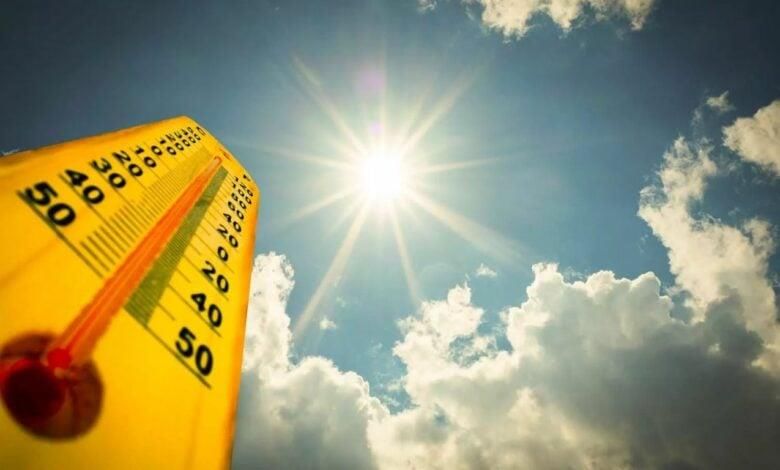 Why in News?
Why in News?
The India Meteorological Department (IMD) has projected an increased number of heatwave days this summer, indicating a concerning trend of rising heat intensity and frequency. This situation poses significant health risks, particularly for vulnerable populations, and can lead to substantial economic losses. While heatwaves can be managed with timely interventions, many states and cities have inadequately implemented their heat action plans.
- IMD forecasts an above-normal number of heatwave days for northern, central, and eastern India.
- Health risks are exacerbated for vulnerable groups, with economic impacts anticipated.
- Implementation of heat action plans across states has been insufficient.
Additional Details
- IMD’s Heatwave Forecast for 2024: The IMD predicts a significant rise in heatwave days, particularly in central and eastern states such as Odisha and Jharkhand, which are expected to experience above-normal temperatures for up to 11 days.
- Expected Heatwave Days: In Rajasthan, western regions may face between 12-18 heatwave days, while eastern areas could see 10-15 days, surpassing the usual average of over eight days.
- 2024: A Record-Breaking Year for Heat: Every Indian state except Kerala is expected to experience heatwaves, with rising heat stress noted even in typically cooler regions.
- Historical Heatwave Data: The year 2024 has been marked as one of the hottest, with significant heatwave days recorded, raising concerns about climate change's impact on economic and health sectors.
- Challenges in Implementation: Despite existing heat action plans, execution remains weak, often focusing on immediate responses rather than long-term strategies.
- Need for Stronger Coordination: Effective implementation of heat action plans requires a coordinated effort supported by government mechanisms to adapt to changing climate conditions.
In conclusion, the anticipated heatwaves pose a considerable challenge for India, necessitating improved heat action plans and stronger governmental coordination to safeguard health and economic stability.
|
38 videos|5293 docs|1118 tests
|
FAQs on UPSC Daily Current Affairs: 3rd April 2025 - Current Affairs & Hindu Analysis: Daily, Weekly & Monthly
| 1. What is the Chandrayaan-3 ChaSTE mission and its objectives? |  |
| 2. How does the Aqueduct relate to water resource management? |  |
| 3. What is the Reciprocal Tariff Dilemma and its implications for international trade? |  |
| 4. What is the significance of the Katchatheevu Islands in India-Sri Lanka relations? |  |
| 5. What are the potential dangers of AI-based exploitation in digital child abuse? |  |
















